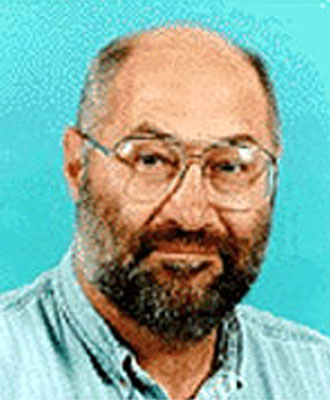Abstract
The book, Depth Imaging of Foothills Seismic Data, was published by the Canadian Society of Exploration Geophysicists (CSEG) as part of the 2000 CSEG Fiftieth Anniversary Project, and deals with seismic depth imaging of complex structures, as found in the Western Canadian Foothills. The foothills depth imaging project was initiated in 1998 at the University of Calgary by Larry Lines, Sam Gray and Don Lawton as a CSEG Superfund Project. The goal of the project was to provide a course and a book for Canadian universities outlining the techniques and applications of depth imaging in foothills exploration. At the same time, it also helped to support Lanlan Yan in her Ph.D. research on the subject. The book provides an outline for this short course. This CSEG course was presented at five Canadian universities including University of Alberta, University of British Columbia, University of Calgary, Memorial University of Newfoundland, and University of Saskatchewan.
The structural geology of the Western Canadian Foothills is dominated by a series of thrust faults, complex folds and steeply dipping formations. Seismic imaging is an essential tool in the petroleum exploration of such complicated geology, and due to structural complexity and steep dips, migration is a process which is necessary for the correct positioning of seismic reflection events. Migration is defined as a processing step for placing anisotropic reflectors in their true subsurface location. More specifically, seismic prestack depth migration is the preferred method for the following reasons:
Prestack migration does not use the common midpoint stacking, which will smear reflections from steeply dipping layers.
Depth migration can accommodate the lateral seismic velocity variations found in foothills geology, whereas time migration methods do not.
Foothills rock formations, especially shales, may exhibit anisotropic behavior. That is, seismic velocities will depend on the direction of wave travel. Failure to accommodate this behavior may result in mispositioning of reflectors.
In the book, we look at the depth imaging of foothills structures from Western Canada through the description of theory and applications. It describes seismic models, prestack depth migration, case histories, anisotropy effects, and possible future directions.
In completing this book, the editors thank the CSEG, especially Jack Pullen and Susan Eaton, for their support of the project. We thank the Fold-Fault Research Project (FRP) personnel, McAra Printing, and Linda St. Pierre of FRP for their invaluable assistance.
Biography
Dr. Larry Lines received a B.Sc. (1971) and an M.Sc. (1973) in geophysics from the University of Alberta, and a Ph.D. (1976) in geophysics from the University of British Columbia. In 1976, Larry joined Amoco Canada in Calgary where he worked in the Exploration Department. In 1979, he transferred to Amoco's Research Center in Tulsa where he worked in the research areas of geophysical inversion, imaging and reservoir characterization, and attained the position of Research Associate. From 1993 to 1998, Dr. Lines served as the NSERC/Petro-Canada Chair in applied seismology in the Department of Earth Sciences at Memorial University of Newfoundland. He currently serves as the Chair in Exploration Geophysics at the University of Calgary. Larry shared the award for Geophysics Best Paper in 1988 and 1996 and was SEG Distinguished Lecturer in 1991. He has served the Geophysical Society of Tulsa (GST) as Editor, First Vice-President and President, and was granted Honorary Membership with that organization. Professor Lines has served SEG as an Editor and Associate Editor for Geophysics, The Leading Edge, SEG slide series, translations, Special Editor for IEEE and Editor for CSEG. He was recently awarded honorary lifetime membership to the SEG and CSEG. He has co-written or co-edited five books on geophysical inversion and imaging. He is a member of SEG, EAEG, CSEG, AAPG, GST, and APEGGA.





